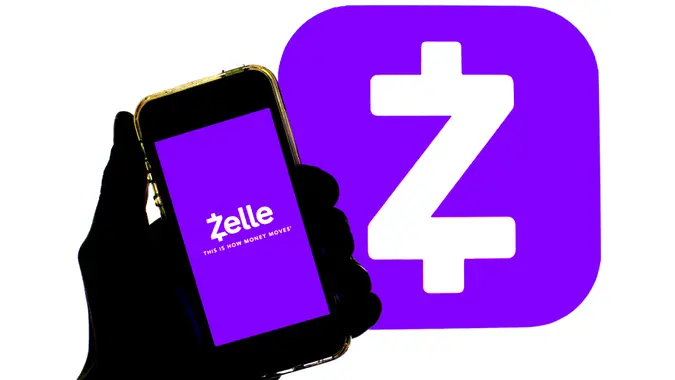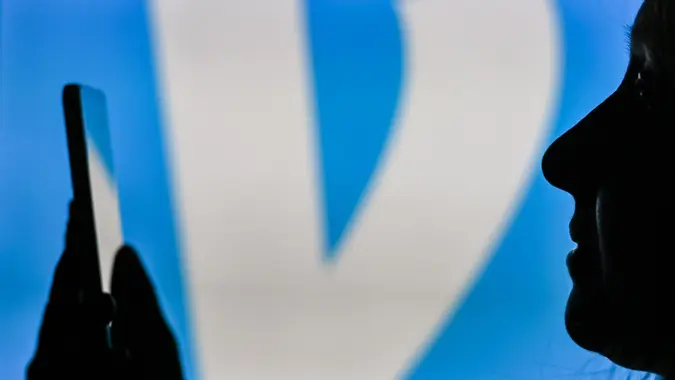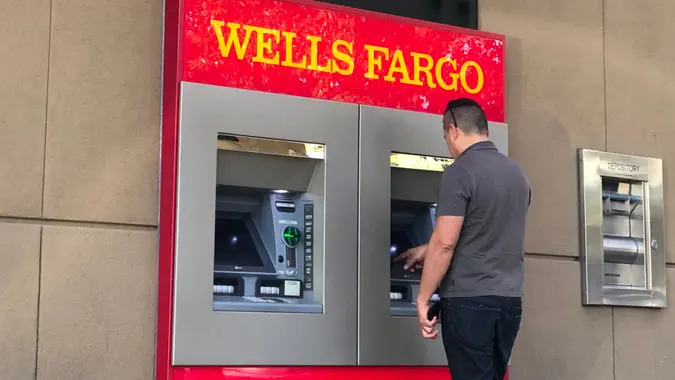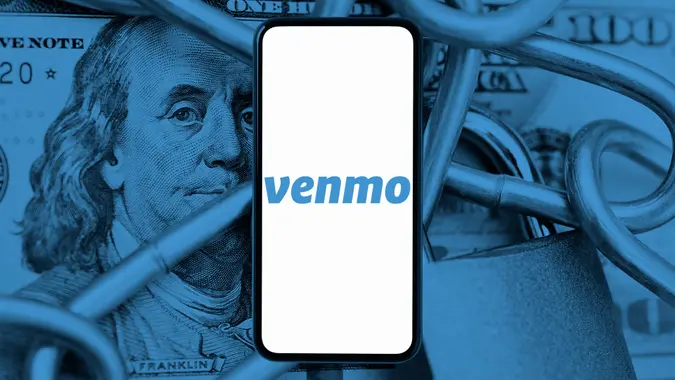Thanks to Fraud, Big Banks Might Not Let You Make Your Normal Mobile Deposit

Commitment to Our Readers
GOBankingRates' editorial team is committed to bringing you unbiased reviews and information. We use data-driven methodologies to evaluate financial products and services - our reviews and ratings are not influenced by advertisers. You can read more about our editorial guidelines and our products and services review methodology.

20 Years
Helping You Live Richer

Reviewed
by Experts

Trusted by
Millions of Readers
Do you use mobile check deposits to put your paycheck into your bank account? If so, you may be forced to change your habits in the future. Due to a wave of mobile check scams, Fidelity Investments has begun to limit some check deposit features, The Wall Street Journal reported.
Other organizations that have been similarly affected may soon follow suit.
If you’re worried about financial scams, learn the red flags you should look out for to protect your money.
Check Fraud at Financial Institutions
Fidelity Investments is provides investment products and stock trading services to millions of customers. If you’re an American with a 401(k) or individual retirement account, there’s a good chance that you’re a Fidelity customer.
Until recently, customers with a Fidelity cash management account — similar to a checking account — could deposit paper checks by taking a photo of the check through the Fidelity mobile app. While the checks usually took two to six days to clear, customers were able to access a portion of the money right away, before the check was verified. This is what the fraudsters took advantage of.
By advertising a get-rich-quick scheme on social media, the scammers were able to convince some users to open Fidelity accounts and give them the log-in details, according to The Wall Street Journal. The scammers then took photos of fake checks and sent whatever money they could to their own accounts. They were able to convince the owners of the accounts to hand over their Fidelity credentials by telling them that they would receive a share of the ill-gotten gains.
Fidelity Isn’t the Only Financial Institution To See This Type of Fraud
The mechanism was similar to the “Chase Bank Money Glitch,” which went viral on social media. In both cases, users deposited fake checks through the mobile app or online portal and were able to move a portion of the funds before the checks were verified.
It’s worth noting that Chase is now filing lawsuits against customers who took advantage of this strategy.
How These Scams Work — Is Your Money at Risk?
In cases like these, the owner of the account, whose name and Social Security number were used to deposit the fake checks, is likely to be the one who suffers the consequences. The fraudsters will simply move on to another victim, or “money mule” as the Federal Bureau of Investigation calls them.
Getting access to another person’s account is a common method used for similar illegal activities, such as money laundering and wire fraud. Through social media, fraudsters find users who want to make some money and offer them a percentage of the potential gains for access to their bank account.
Funds are then funneled through that account before being sent over to the scammer. For hacks and other types of fraud, the money may be charged back from the account of the user who gave the scammer their log in details, instead of the scammer’s account.
To keep your money safe, never give your banking log in details to anyone else — if it sounds too good to be true, it probably is, and it might carry legal consequences for you, as well.
Fidelity’s Response: What It Means for You
Fidelity responded to the wave of fraud by drastically reducing the amount of money users can add to cash management accounts through mobile check deposits. In the past, users could deposit up to $100,000 — Fidelity has now lowered the mobile check deposit limit to $1,000 for some users, according to The Wall Street Journal.
In addition to this, the money will no longer be available right away. Some account holders may have to wait 16 business days after depositing a check before they can access the money. In practice, this may mean waiting more than three weeks for your money to be available — one user reportedly deposited a check on Sept. 16 and was told that his money wouldn’t be available until Oct. 8 “due to a recent increase in fraud.”
As mobile deposit fraud rises, more financial institutions are likely to follow in Fidelity’s footsteps. However, this significantly impacts the usability of the feature for everyone who was using in-app check deposits normally. The ability to just take a photo of your check and quickly get the money into your account is what made mobile deposits so popular in the first place.
If you’re going to need the money from your paycheck for bills or other expenses in the weeks after you receive it, then longer deposit times can make life difficult. If you use this feature, keep up to date with what your bank is doing.
Until banks make their decisions known, it might also be safer to make the trip and deposit your check at a physical location if you can, especially if you need to access the money right away.
 Written by
Written by  Edited by
Edited by 
























